
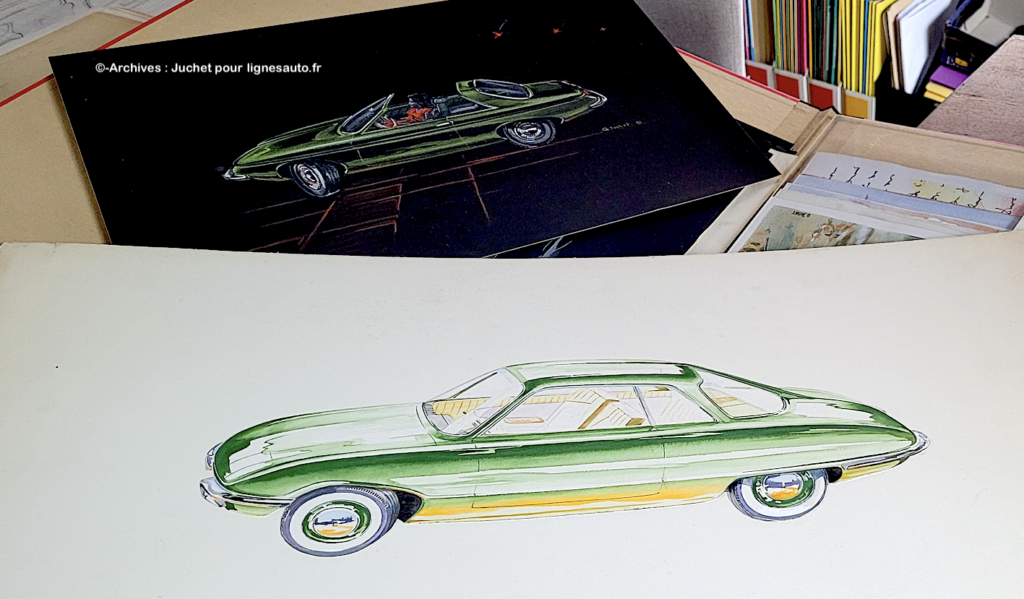
At the end of 2023, thanks to Renault’s archives and, above all, Gaston Juchet’s family, particularly his eldest son Jean-Michel, I had the privilege of delving into Gaston Juchet’s (1930-2007) personal archives with Jean-Michel. This discreet designer, who left a lasting mark on the style of each decade he worked in (the R16 in the 1960s, the R17 in the 1970s, and the R25 in the 1980s), joined Renault in 1958 and was responsible for design at the “Régie” until 1987.
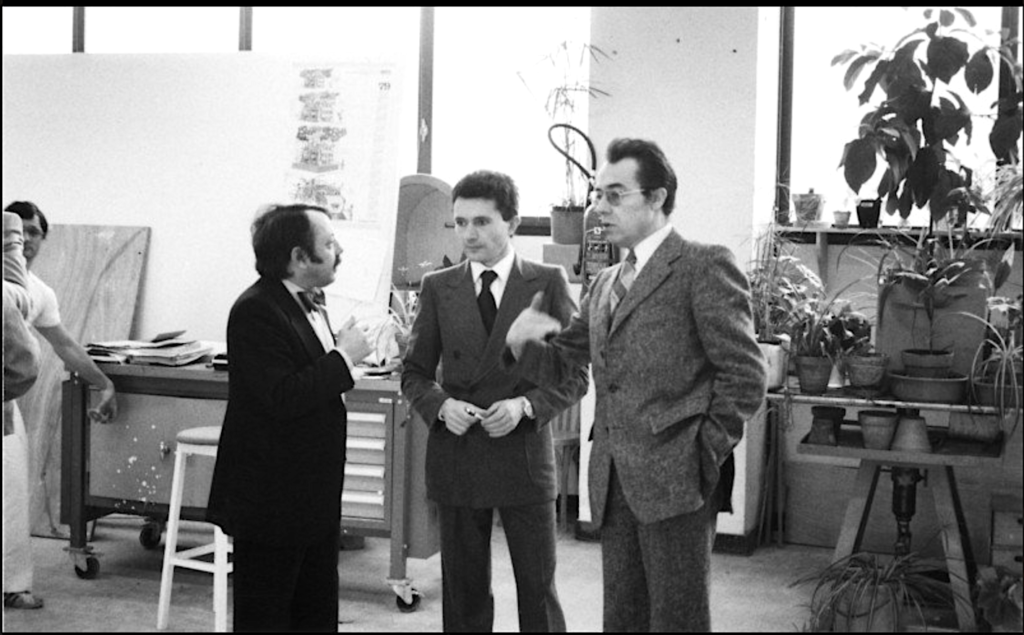
The bilingual book “Style Renault – l’ère Gaston Juchet” (Renault Style – The Gaston Juchet Era), which resulted from this work with Jean-Michel Juchet (below), is still available in the three main French automotive bookstores (https://www.motors-mania.com/fr/, https://www.librairie-passionautomobile. com/ , https://www.la-boutique.com/) and received the “Historic Car Book” award at the 2023 Grand Prix du Livre Automobile et des Mobilités (Automobile and Mobility Book Awards).
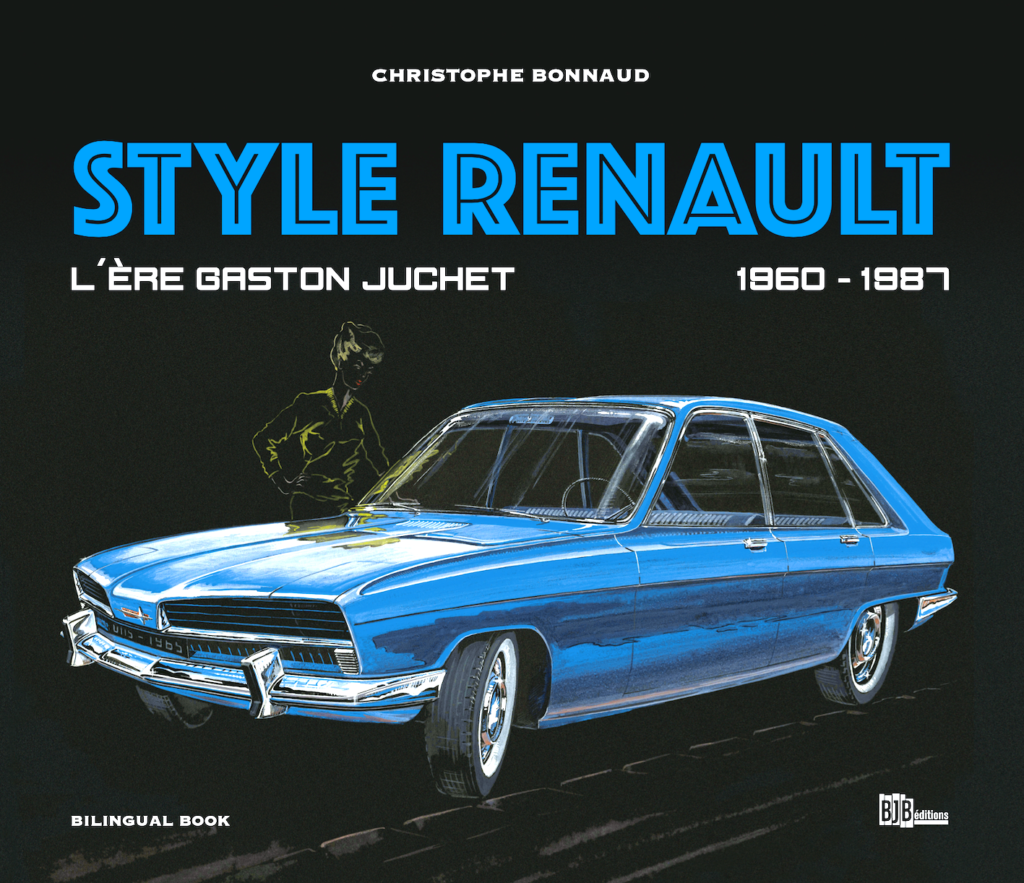
Among the hundreds of sketches, gouaches, and drawings extracted from the Juchet family archives, only those most representative of the great designer’s career were selected. But writing and publishing a book is always frustrating! Dozens of drawings could not be published because publishing laws impose a page limit that, for the author, is always too small!
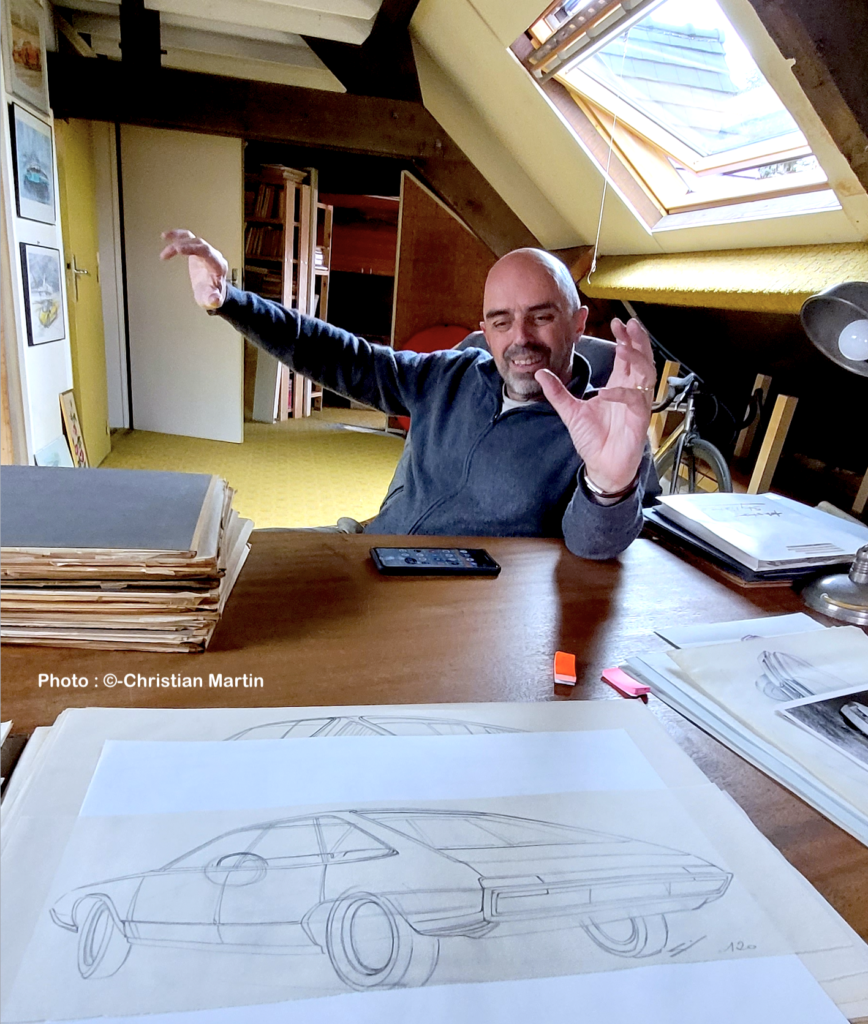
Here are some of the gems from the Juchet family and Renault archives that have not been published. They are sometimes accompanied by others that have been published in the book, to provide a better understanding of their chronological development, bearing in mind that many of Gaston Juchet’s sketches, drawings and paintings are not necessarily dated.
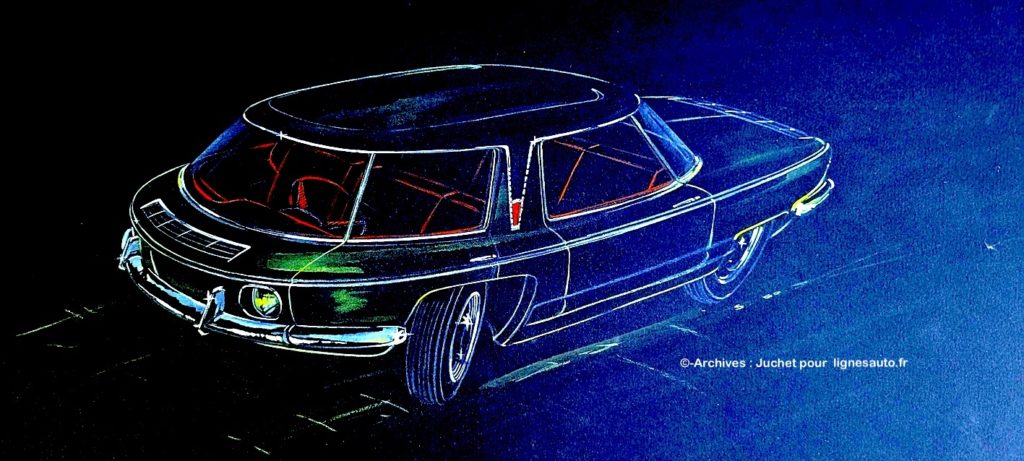
Above is a painting of the 900 program led by Gaston Juchet in the late 1950s, on which the designer would work until the 1970s. This project evoked a sedan with a (very) advanced cabin and a rear-mounted V8 engine. The trunk was located between the passenger compartment and the engine. Although abandoned fairly quickly, this program left its mark on Gaston Juchet, who continued his work on advanced cabins. Marc Deschamps at Bertone took up this advanced cabin theme. In 1988, he designed the Genesis concept car based on a Lamborghini V12 engine architecture located… at the front!
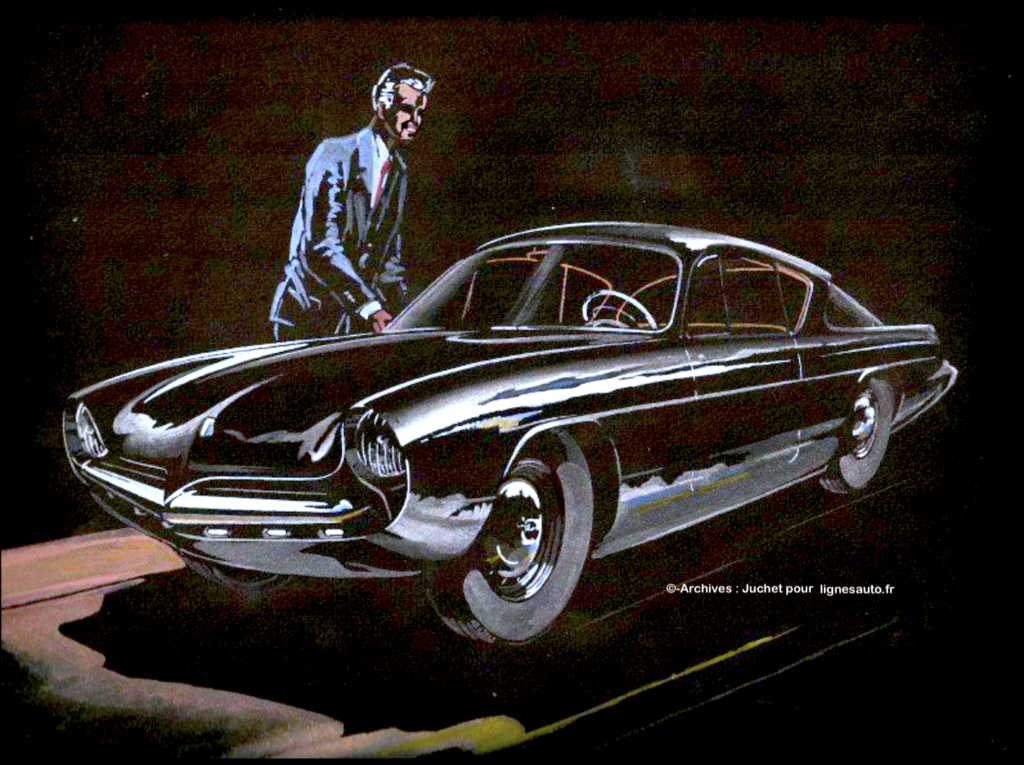
This undated painting depicts a small coupe with a fluidity reminiscent of Ghia designs or Italian cars in general. However, this is not what makes this work interesting. Rather, it is the presence of a figure. Gaston Juchet produced numerous paintings with a backdrop, sometimes human as here, but more often with airplanes—he trained as an aeronautical engineer—or futuristic architecture, and even, from time to time, a wind tunnel. The book reveals Gaston Juchet’s unknown talents in the world of portraiture, airplanes, and abstract painting.
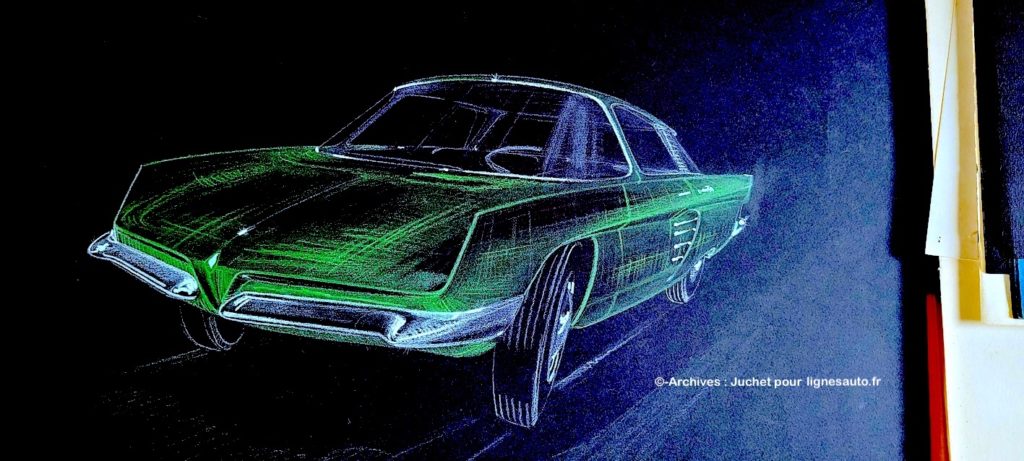
It’s a shame that this painting above isn’t dated. It shows the characteristic side profile of a Renault Floride unveiled in 1958 by Régie Renault, with air intakes for a rear engine. This old-school design was used on lots of Renaults until the company switched to front-wheel drive with the Estafette utility vehicle in 1959 and the R4 in 1961. It lets them lower the front hood a lot on this bold design. It almost disappears in the middle of the two fenders, which have two thin fins. Reminiscent of the 1950s, the panoramic windshield evokes a few American designs. Let’s not forget that the small Renault convertible was sold on the other side of the Atlantic under the name Caravelle.
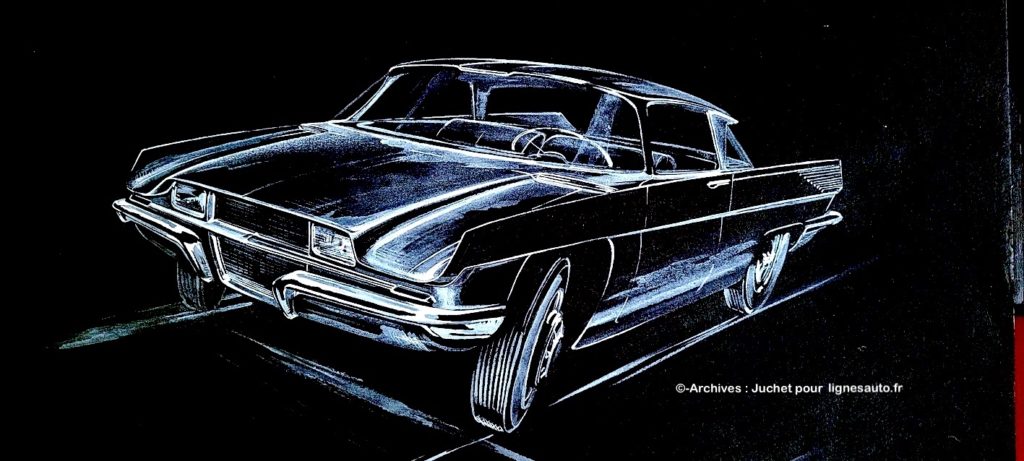
In the same vein and from the same period, the painting above seems to have been based on the green design above it. This time, the hood is no longer flat and features a huge central bulge that houses two rectangular headlights (rare at the time…), which are completely absent from the “green” version of this coupe. While the windshield retains its panoramic shape, the sides are more sober and extended by more pronounced fins at the rear.
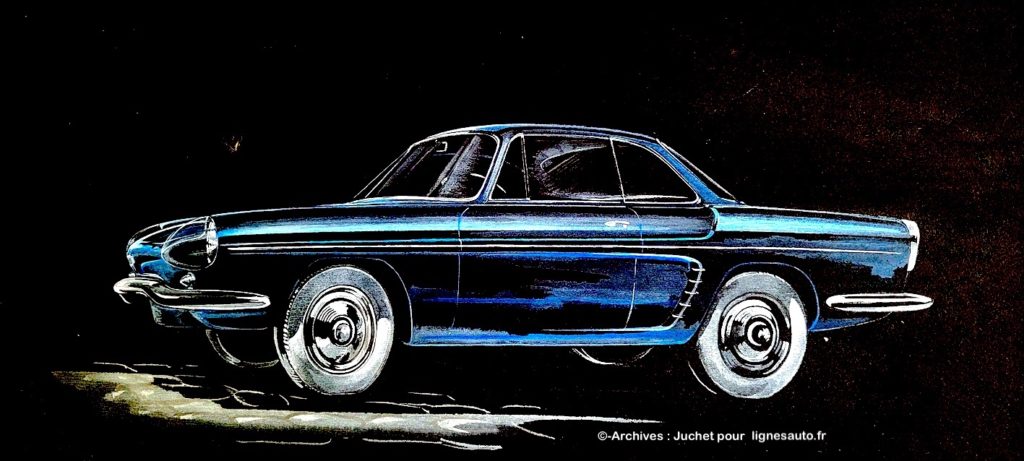
Let’s finish with Renault Foride’s inspirations with this little coupe-convertible that looks identical to the production version. However, Gaston Juchet modernized it with two glass globes covering the headlights. More stylish, undoubtedly better aerodynamics and a more futuristic look. Surprisingly, this design reminds me of the “Vaillante” road cars designed by Jean Graton for his first Michel Vaillant comic books in the late 1950s…
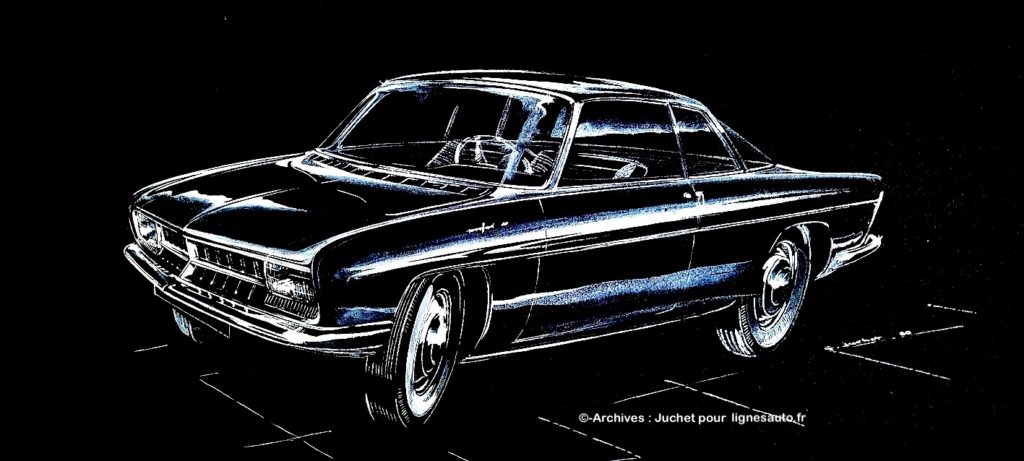
Much more modern, even if undated, the painting above abandons rounded shapes to give the front end a little more character, particularly with its rectangular headlights. It should be noted that these rectangular headlights first appeared in mass production on the 1961 Citroën Ami 6. At Renault, the Renault 10, introduced in 1965, did not get them until 1967 with its restyling. Fortunately, Renault had already taken its revenge on Citroën with its R16 with rectangular headlights in 1965…
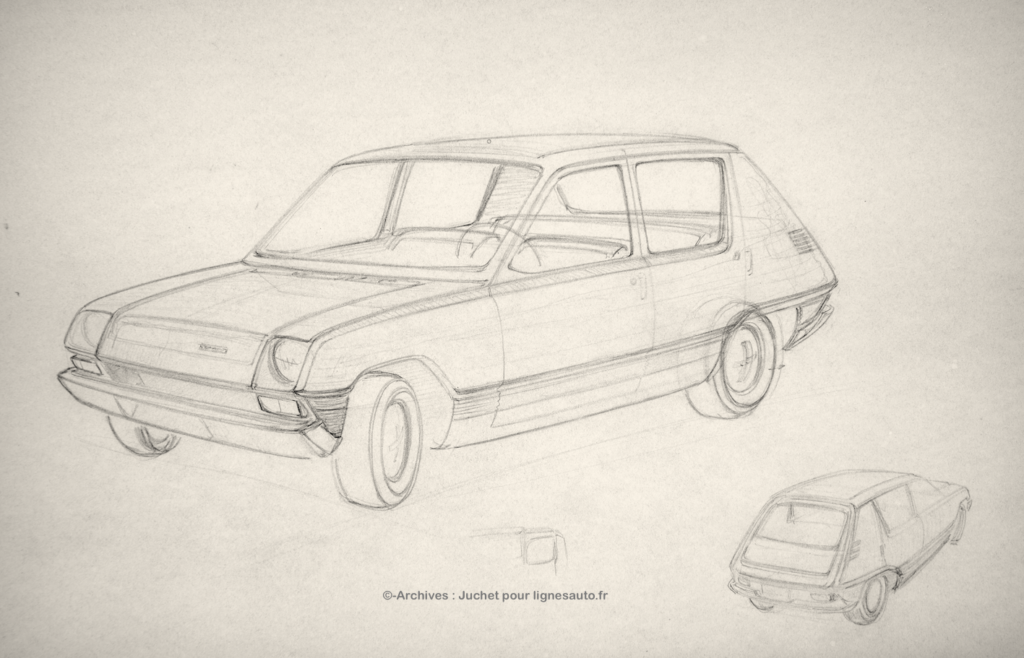
Let’s change worlds with sketches done on tracing paper. Every evening, Jean-Michel Juchet and I would remember flipping through dozens of them, our thumbs blackened. Many of them illustrate the book, but here are a few that have not yet been published. Above, it is difficult to date this sketch, which looks like a more voluminous R5, with its front end slightly inspired by an AMC Pacer. But the latter was presented in 1975, and this sketch seems to have preceded the presentation of the Pacer… This drawing hints at the beginnings of laminated bumpers, while the shape of the rear panel is dependent on that of the almost vertical rear door. Could this be a study for a very spacious four-door Renault 5?
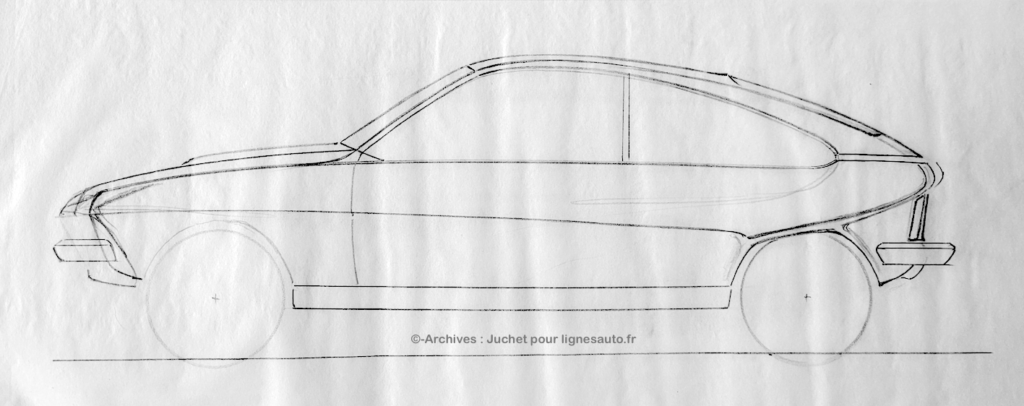
Since we are discussing the Renault 5, which is described in detail in the book, here is a previously unpublished drawing. It is quite similar to the studies for a Renault 5 coupé designed by Gaston Juchet. However, this version is larger and more detailed at the front and rear. Would the panel beaters have been able to turn this drawing into a vehicle made of sheet metal? Given that Robert Broyer’s R14 project (dating from the early 1970s) was never fully transposed into series production for panel beating reasons, one can imagine the worst if Gaston Juchet’s proposal had made it through to the industrialization stage!
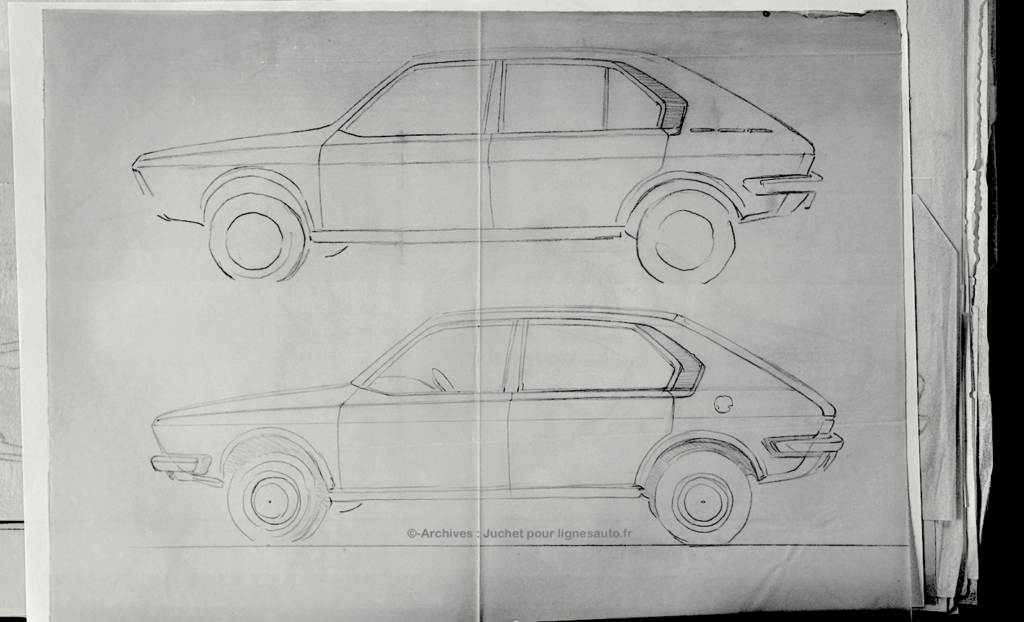
We are now entering a phase where we will understand that Gaston Juchet was able to reinterpret strong stylistic themes according to the templates of the cars. The designer worked on the Renault 14 project 121 (released in 1976), a program that was ultimately won by stylist Robert Broyer. The drawings above, which have never been published before, form the basis of Gaston Juchet’s fairly classic proposal for the R14. Below, the painting published in the book shows that Gaston Juchet adapted his design to the specifications, particularly with the arrival of the transverse engine on a Renault car. The first. Note the significant shortening of the front overhang and the vertical design of the door handles, below. The designs of the late 1960s, particularly the 120 of 1968 (see below), had already explored this theme. Otherwise, the classicism of Gaston Juchet’s early sketches of the R14 did not reach the model stage.
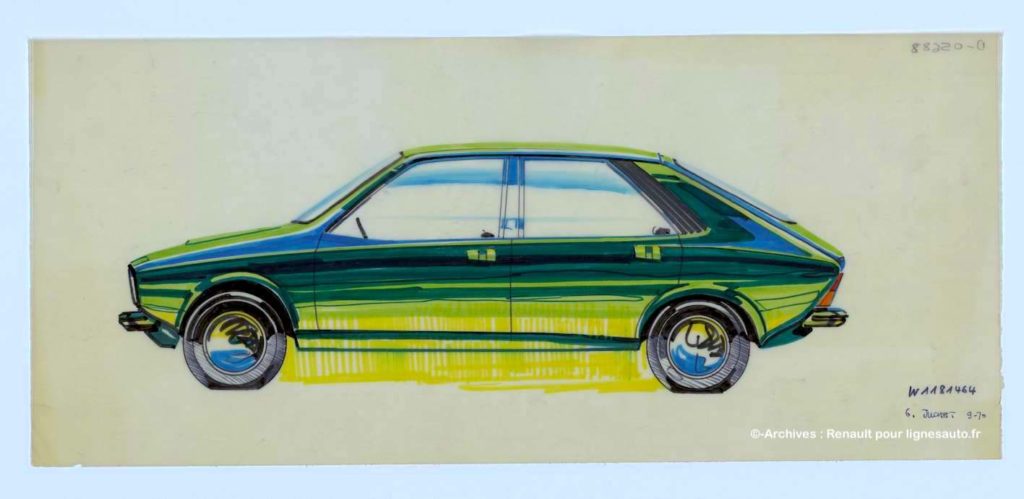
Below, this drawing dated October 18, 1969 corresponds to the period when work first began on a compact sedan that would become the R14. However, it seems to explore the idea of a more prestigious car with a more generous volume. It is true that the agreements signed between Peugeot and Renault were gradually taking shape. These agreements certainly mentioned the R14/Peugeot 104 duo, which would share the transverse engine, among other things, but they also referred to the joint Peugeot “J” and Renault “120” project for more ambitious cars.
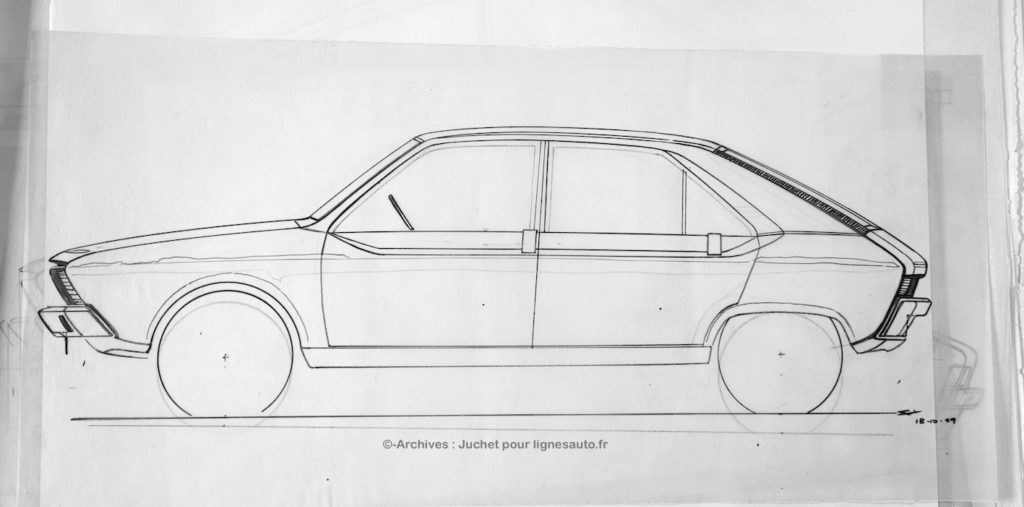
Renault’s Project 120, the first design of which by Gaston Juchet can be seen below, was a more upmarket sedan than the R14. It was intended to replace the R16. However, the “120” never saw the light of day in its original form. Nor did Peugeot’s “J” project, which was replaced by the 305 based on the 304 in 1977. At Renault, however, the “120” laid the foundations for the Renault 20/30 duo (1975/1976). What Jean-Michel Juchet and I noticed was that Gaston Juchet’s paintings, produced in the wake of the sketches, were identical to the first drafts. This can be seen by comparing the drawing of the “120” project (below) and the painting (further down) of the same project.
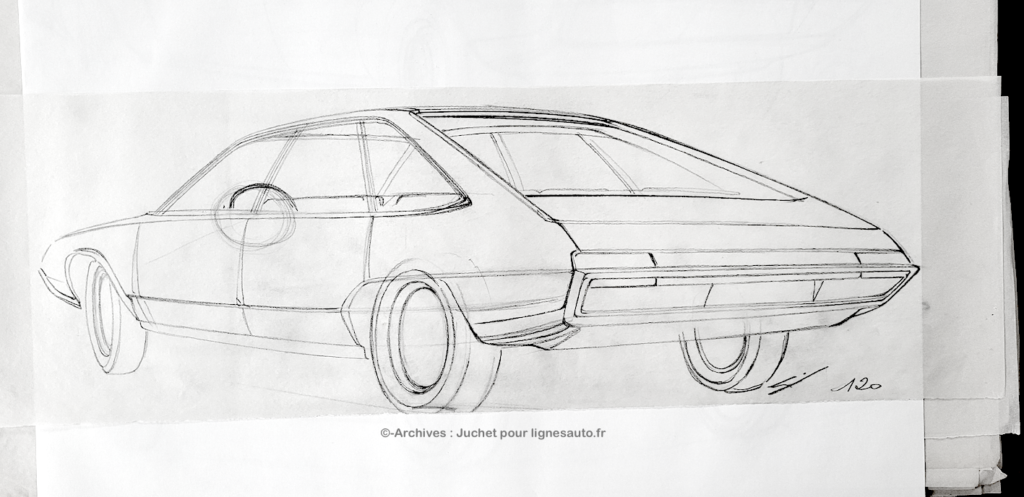
From the first sketch of the R14 project to the “120” design, the template grew in size, but the theme evolved steadily towards a car inspired by the architecture of the R16 with its tailgate and three side windows. To be completely accurate, it should be noted that between the 120 project at the end of the 1960s and the R20/30 duo in the mid-1970s, an intermediate project slipped into the program: the “R” project. The aim was to refocus the style of the “120” on a less generous set of specifications. Only one drawing of this “R” project has been found in Gaston Juchet’s archives and published in the book.
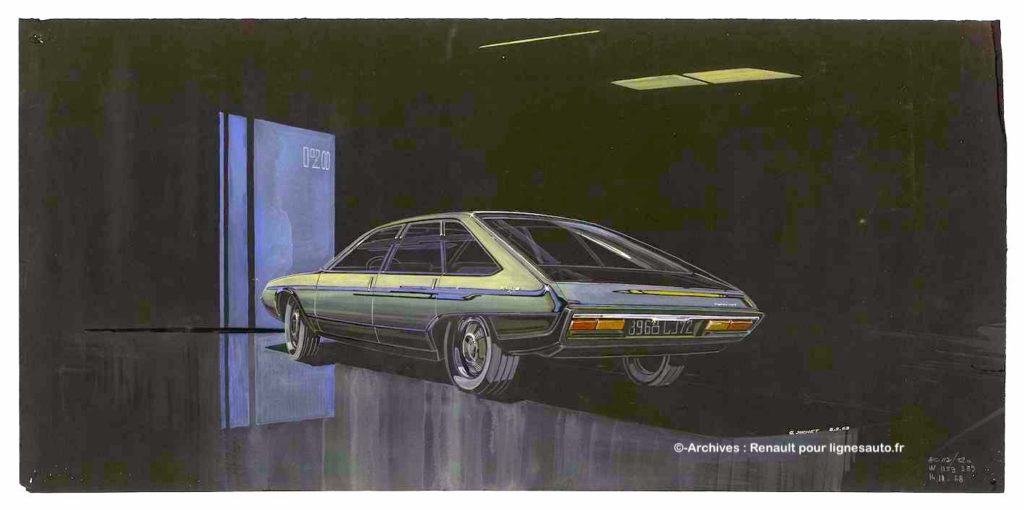
Among all the sketches on tracing paper produced by Gaston, there are some that are completely off-plan. The era still allowed designers a certain amount of freedom to work on new themes. Once again, it is important to consider the context: in the early 1970s, there were only about ten Renault designers, and their office walls were covered with drawings. Below is a study for a compact two-seater city car with what we imagine to be excellent visibility! This theme was also very popular at Citroën. The arrival of Robert Opron at Renault in 1975 would take things even further in this area with the VBG (Véhicule Bas de Gamme, or low-end vehicle) program, which we have already mentioned.
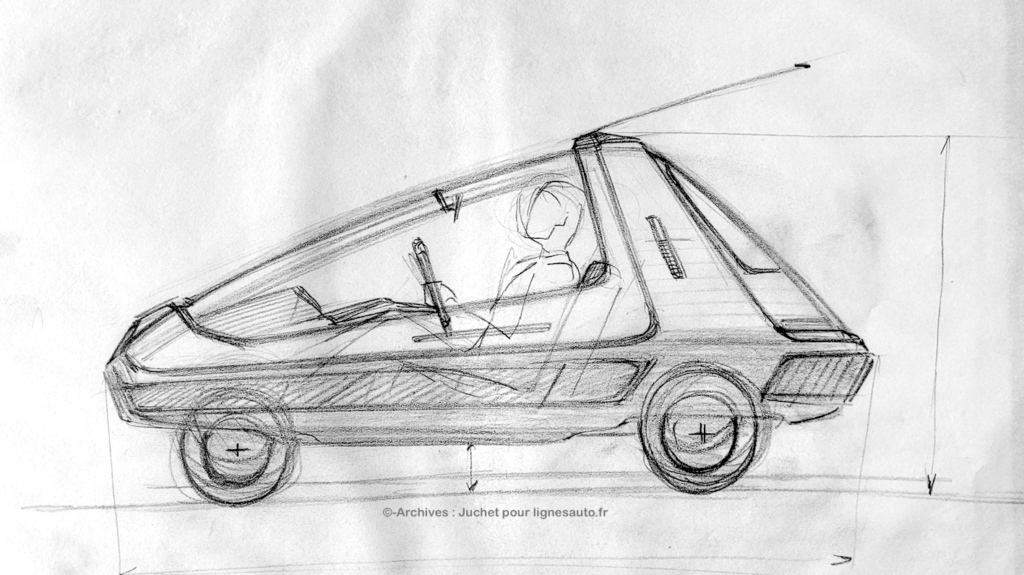
Below, this sketch, once again undated, seems to fall between the era of Giugiaro’s VW Porsche Tapiro (1970) with its arrow-shaped bow, and that of the 1977 Ford Ghia Megastar with its curved black-painted beltline and generous side windows. This highly futuristic design is superbly executed with sloping sides, a fluid and sporty windshield movement, and the 13- to 15-inch wheels of the era! This coupe proves, if proof were needed, the breadth of Gaston Juchet’s work on a wide variety of themes.
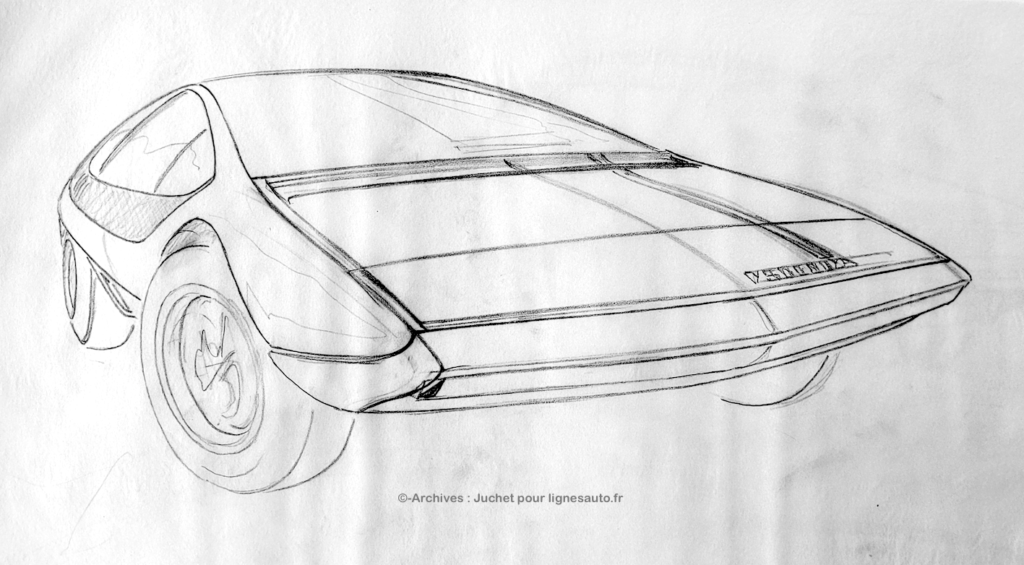
Below are two other examples of the Renault designer’s work: a steering wheel design that validates research that goes far beyond aesthetics alone, as does the following design for the instrument panel layout on the steering console. The steering wheel is designed to offer an effective grip with two real handles on either side. The central band is recessed, which is not in line with the work Renault would carry out in the 1970s on passive safety, when it fitted its steering wheels with prominent foam cushions to absorb the impact with the driver’s chest. Airbags did not yet exist; the first was offered on the Chevrolet Impala in 1973. This design must therefore date from the late 1960s. In any case, it is remarkably simple and elegant.

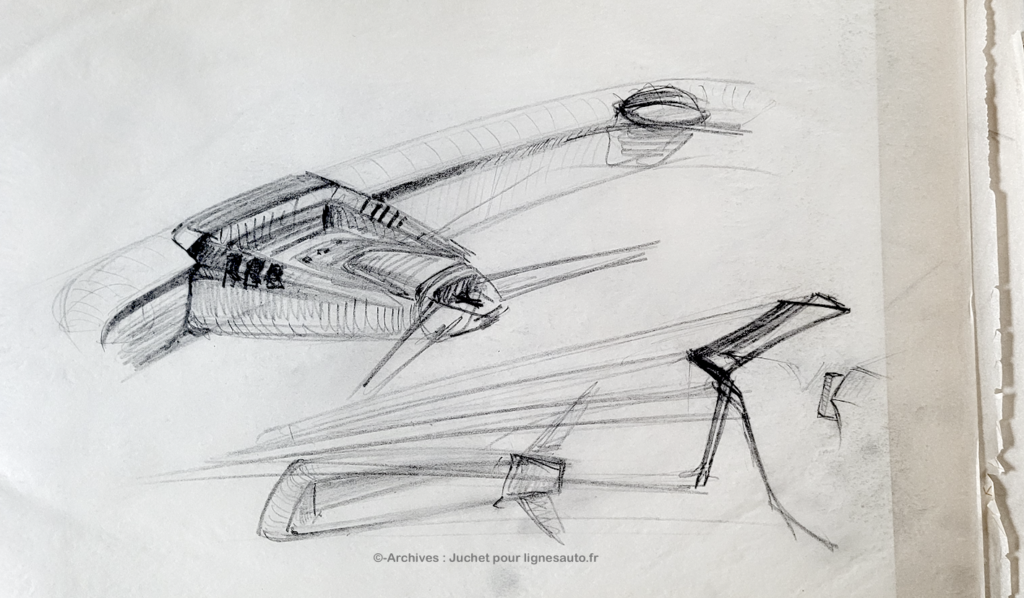
Above, in the steering wheel study series, we see a sketch in which Gaston Juchet reinvents the steering column by integrating the instrumentation into the bottom of the structural element. We can see a few controls positioned on either side of this triangular piece. This is no longer the work of a stylist, but of a designer, as Gaston Juchet imagines the function and improves it through form and concept. We can see how this idea simplifies the design of the dashboard. This design dates from the late 1960s, well before Michel Harmand’s sensational creation at Citroën with the lunule on the 1974 CX.

Being a stylist yesterday or a designer today means identifying with the brand. And brand identification comes through its logo. It is so important that it has grown from a tiny dimension to a much more ambitious one today! And now it is allowed to light up, causing additional confusion for other road users when driving at night. Gaston Juchet manipulated the Renault logo several times. In the 1980s, he tried to highlight it by off-centering it on the driver’s side. This solution was adopted by many manufacturers. The design seems to imagine a compact sedan the size of an R14. The rear wheel arch is very Citroën!
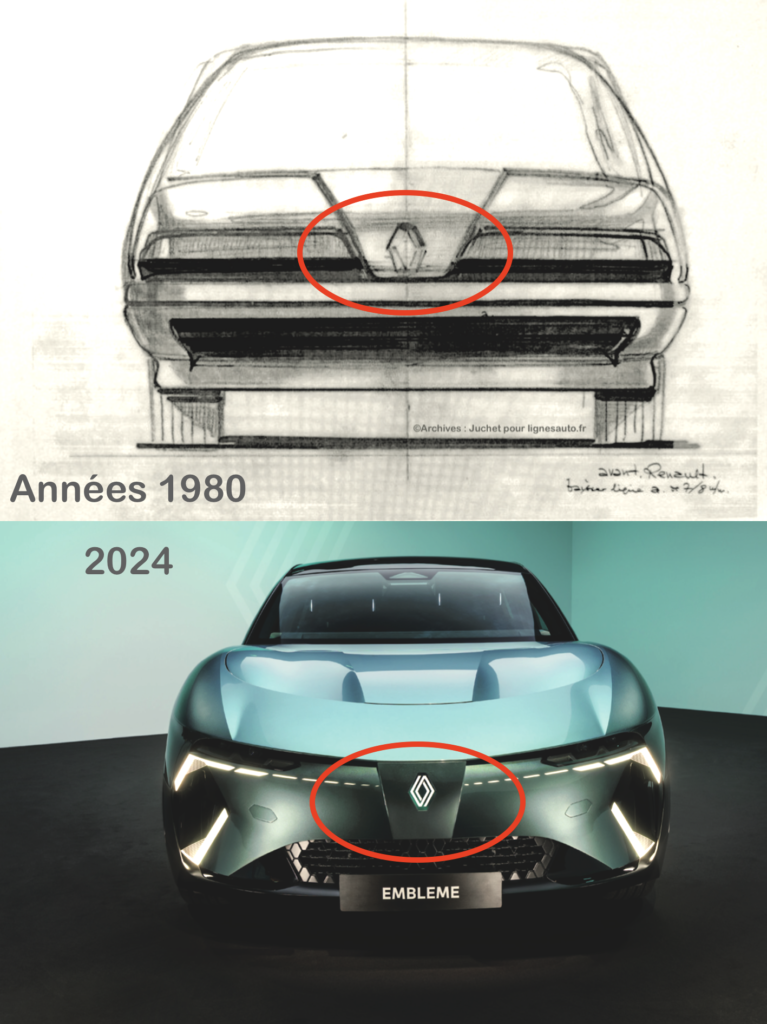
A little nod above to a project by Gaston Juchet, which positions the logo in a sort of beak protruding from the grille, surrounded by two long headlights. This is more or less the solution that Gilles Vidal’s team of designers has chosen for Renault’s new design identity for the coming years. A new identity seen on the Emblem manifesto unveiled at the Paris Motor Show last year…
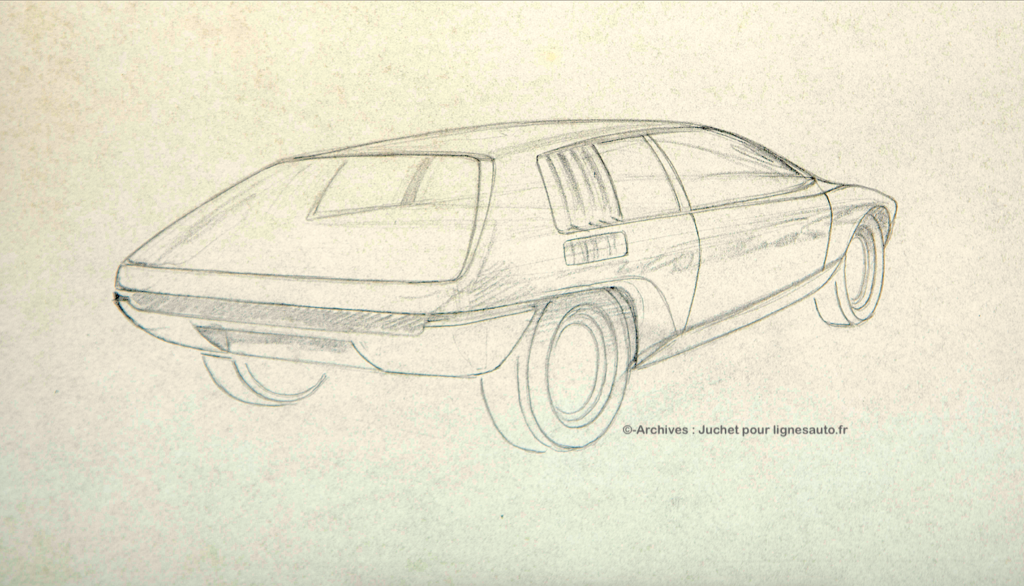
Above is another sketch that could have been a very credible concept car in the 1970s. But concept cars weren’t even on Renault’s radar back then! This shooting brake coupe with side vents undoubtedly inspired by those on the R17 features a huge rear window and a sloping hood. The whole thing is perfectly balanced and proportioned. A Volvo 480 coupe ahead of its time. Was Gaston Juchet aware of the R14 coupe based on the same theme and designed by Robert Broyer in 1976?
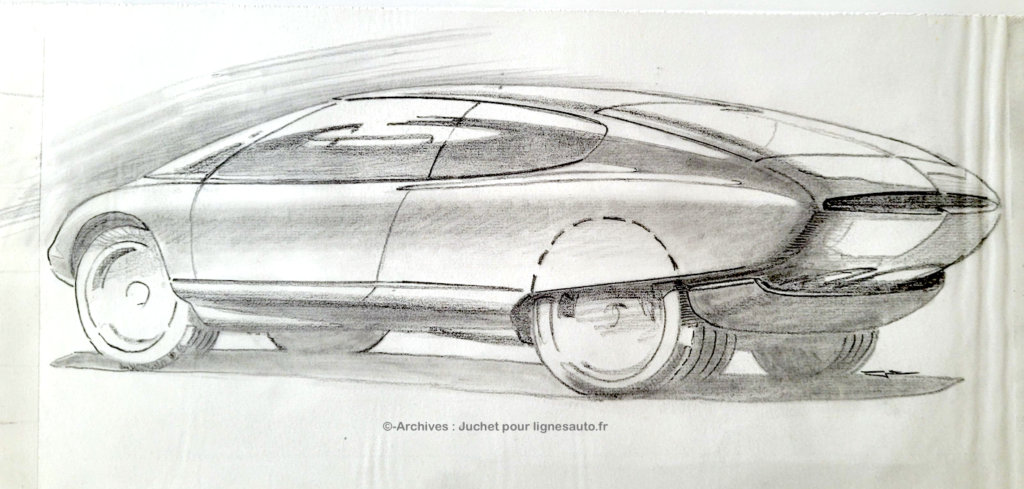
To conclude with the unpublished sketches, here is one drawn in the 1980s. The monovolume shape combined with a raised rear, profiled rear wheels, and a diffuser shield at the rear express the artistic vision of a man who understood the laws of aerodynamics and loved aviation…
BONUS: the Renault 18 coupe that had nothing to do with the Fuego!
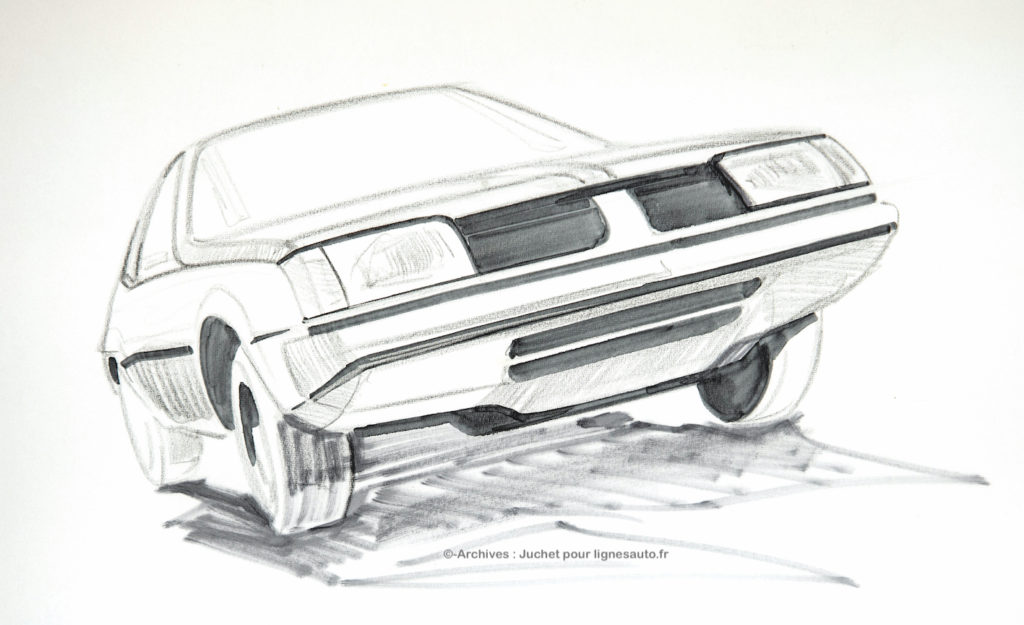
Here is a topic from the book “Style Renault – l’ère Gaston Juchet” (Renault Style – the Gaston Juchet era) concerning a little-known model: the Renault 18 coupé. And no, it’s not the Fuego. Here is an excerpt from the text and a few illustrations.
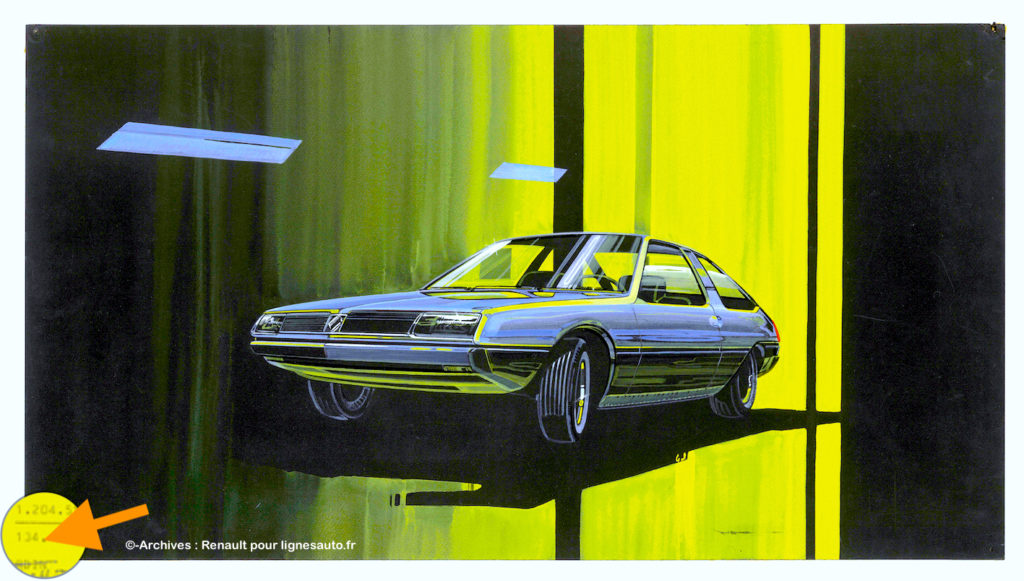
The Renault 18 coupe project was indeed considered. It even made it to the 1:1 scale model stage. In 1973, five years before the R18 sedan went on sale, there was talk of this coupe program, known as the 134. It was not (yet) the 136 program that would lead to the 1980 Fuego. The main work on the 134 program was carried out by Gaston Juchet. Above is the main design drawing dated May 1973.
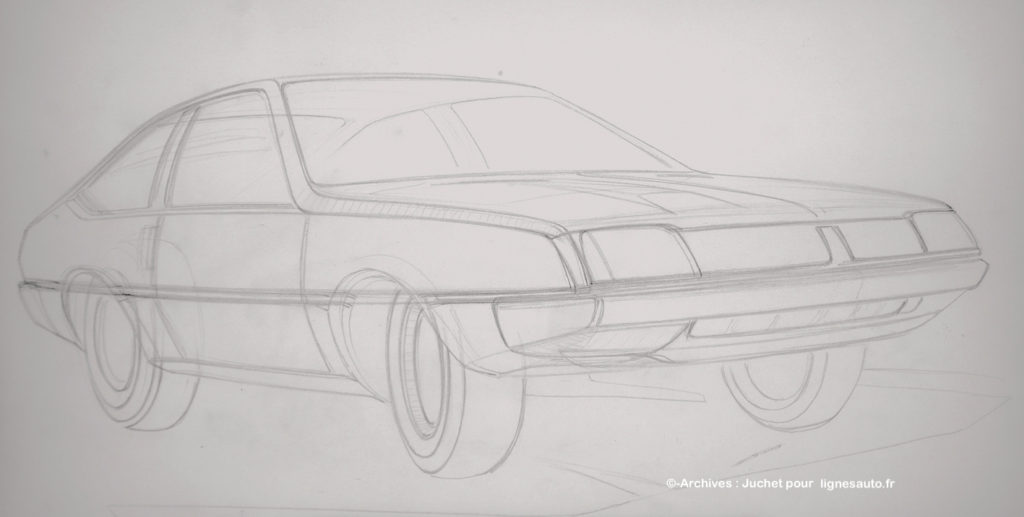
It was initially attributed to Michel Jardin. However, it was in fact designed by Gaston Juchet. In 1973, the R14 was on track for industrialization, which would take a long time, the R16 TX arrived in dealerships, and the NGA (Nouvelle Gamme Alpine) project took shape. Gaston Juchet’s notes add to this work the BRV project for a vehicle focused on passive safety.

Gaston Juchet began designing a silhouette for the R18 coupé at the same time as working on the sedan. He borrowed the curved movement of the windshield base and the autoclave hood from the sedan. Everything else was different, and some styling elements were already reminiscent of the Fuego.
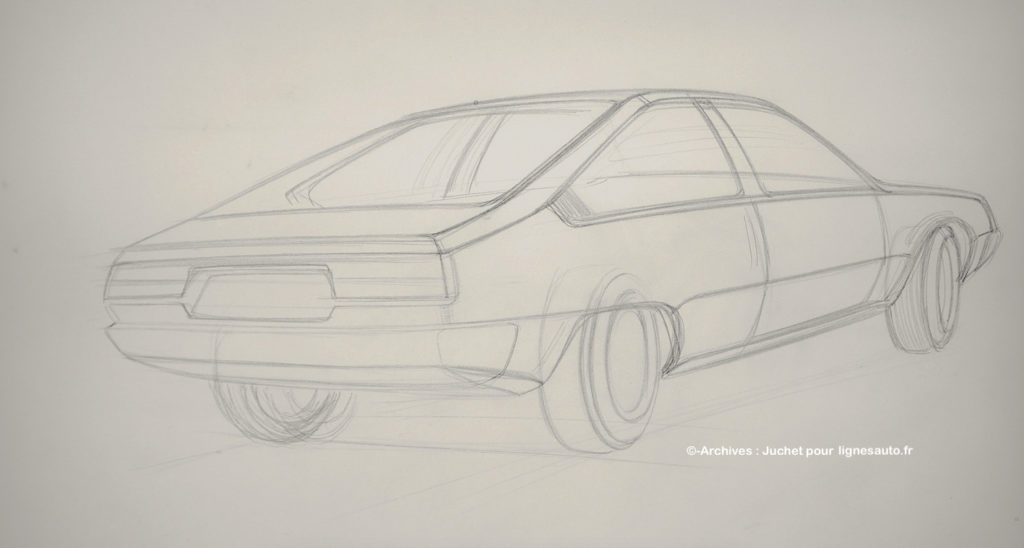
The characteristic curve of the windshield pillar was reinterpreted differently at the rear, where Gaston Juchet relied on advances in stamping to complete his design without distorting his sketches. In the end, his design was produced on a 1:1 scale, and the American-style bumpers suggest that this coupe was intended for export.
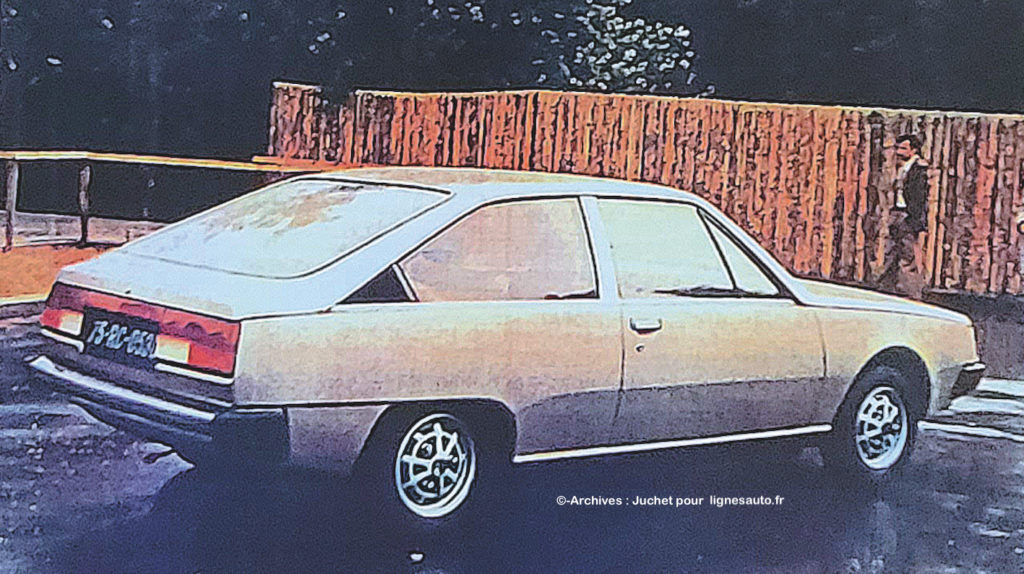
The Renault 18 coupe remained at this stage and was replaced by the Fuego 136 program, which appeared two years after the R18 sedan in 1980. Although the design of the latter was indeed by Michel Jardin, it should be noted that he was not the only designer working on the 136 project, as evidenced by the drawing below signed by Gaston Juchet. However, the reference for the design specifies that, despite the code 136, it is “a free study.”

Did you find this interesting? Read more…
– Renault’s unique X05 project: https://lignesauto.fr/?p=33834
– 60 years of the Renault 16: https://lignesauto.fr/?p=38352
– The R25, Juchet’s masterpiece: https://lignesauto.fr/?p=33427
– Renault’s first bumper: https://lignesauto.fr/?p=29436
– Axel Breun’s crazy project and his Twingo-Ferrari:
